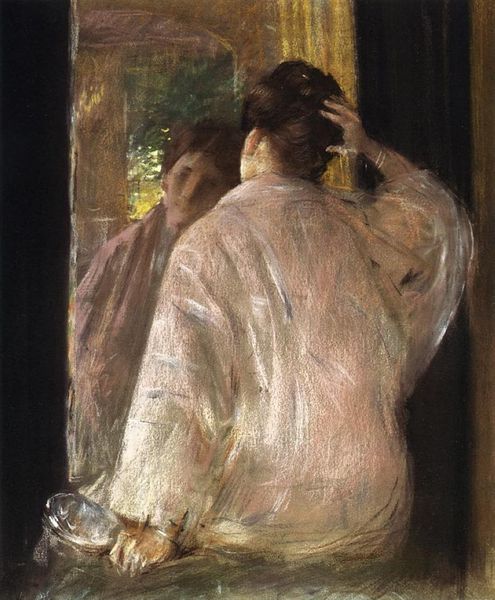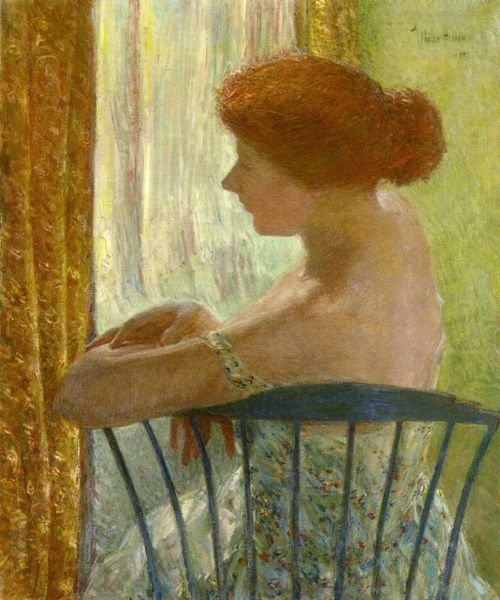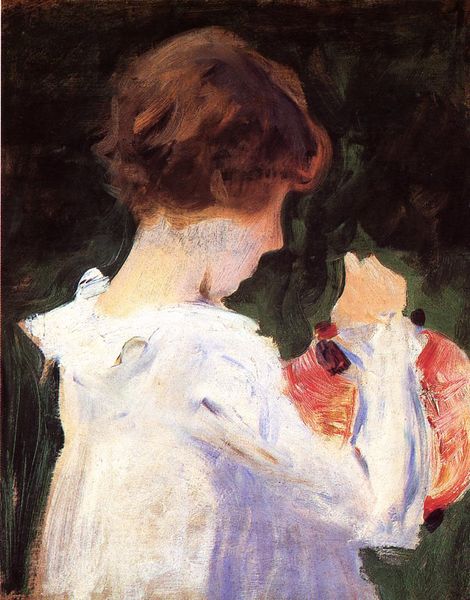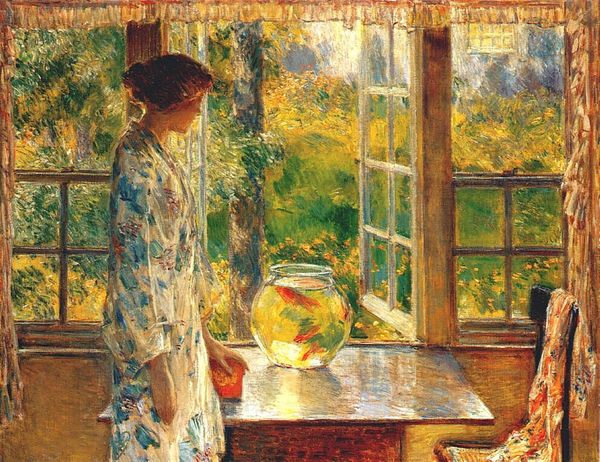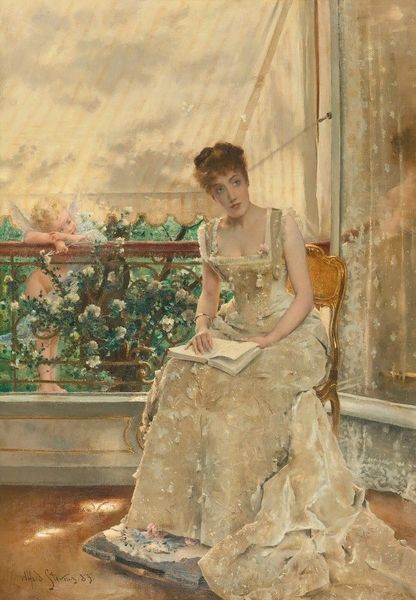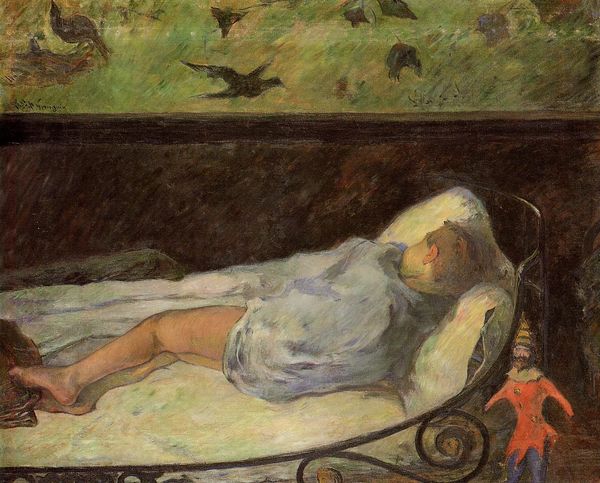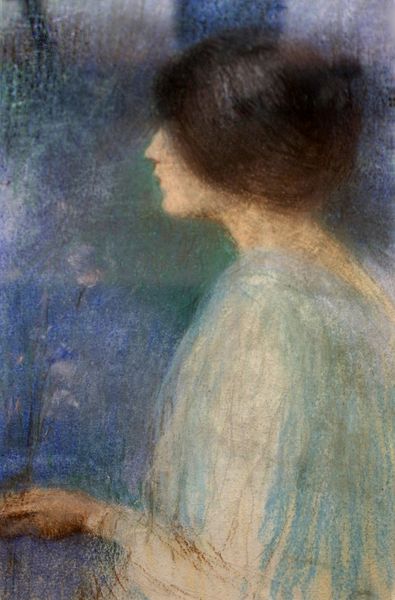
Copyright: Public domain
Curator: This is Childe Hassam's "On the Balcony," painted in 1888. Editor: There's something melancholic about the palette; a young woman looks out into a luminously painted dusk or early evening sky. It's delicate but also a bit haunting. Curator: It absolutely speaks to a certain Romantic sensibility, situating a solitary female figure within a landscape, but it also reflects the changing roles of women during this era and how they were being depicted, often confined to domestic spaces. The balcony becomes this space of transition, between interior and exterior, private and public. How do you interpret the formal aspects, particularly the brushwork and composition? Editor: The handling of oil paint definitely grabs my attention, with a visible build-up, creating layers of material density, especially visible in the construction of her dress and the garden outside. And I'm intrigued by the material reality of that dress, the implicit labor embedded in its production and upkeep and how it defines and limits the woman. Curator: Yes, and considering the broader social context of Impressionism, it’s pertinent to think about the burgeoning middle class and their consumption habits. Paintings such as this one become both a record of a specific social milieu and a form of social aspiration. How does it speak to those contemporary anxieties and possibilities, the tension between freedom and constraint that many women felt at that time? Editor: Seeing the materiality in the dress and construction around the home really draws me to consider class in this artwork. Beyond this painting's aesthetic allure, what can we unravel about labor relations, social status, and the economics of leisure in Hassam's world? Curator: I find that you’ve provided some insightful connections, by shifting from a personal aesthetic experience to wider networks. It makes me reflect again on the complicated interplay between identity, society, and creative production. Editor: By considering process, materials, and historical moment we understand better not only the painting but how the society of that era impacts the production and value of work.
Comments
No comments
Be the first to comment and join the conversation on the ultimate creative platform.
